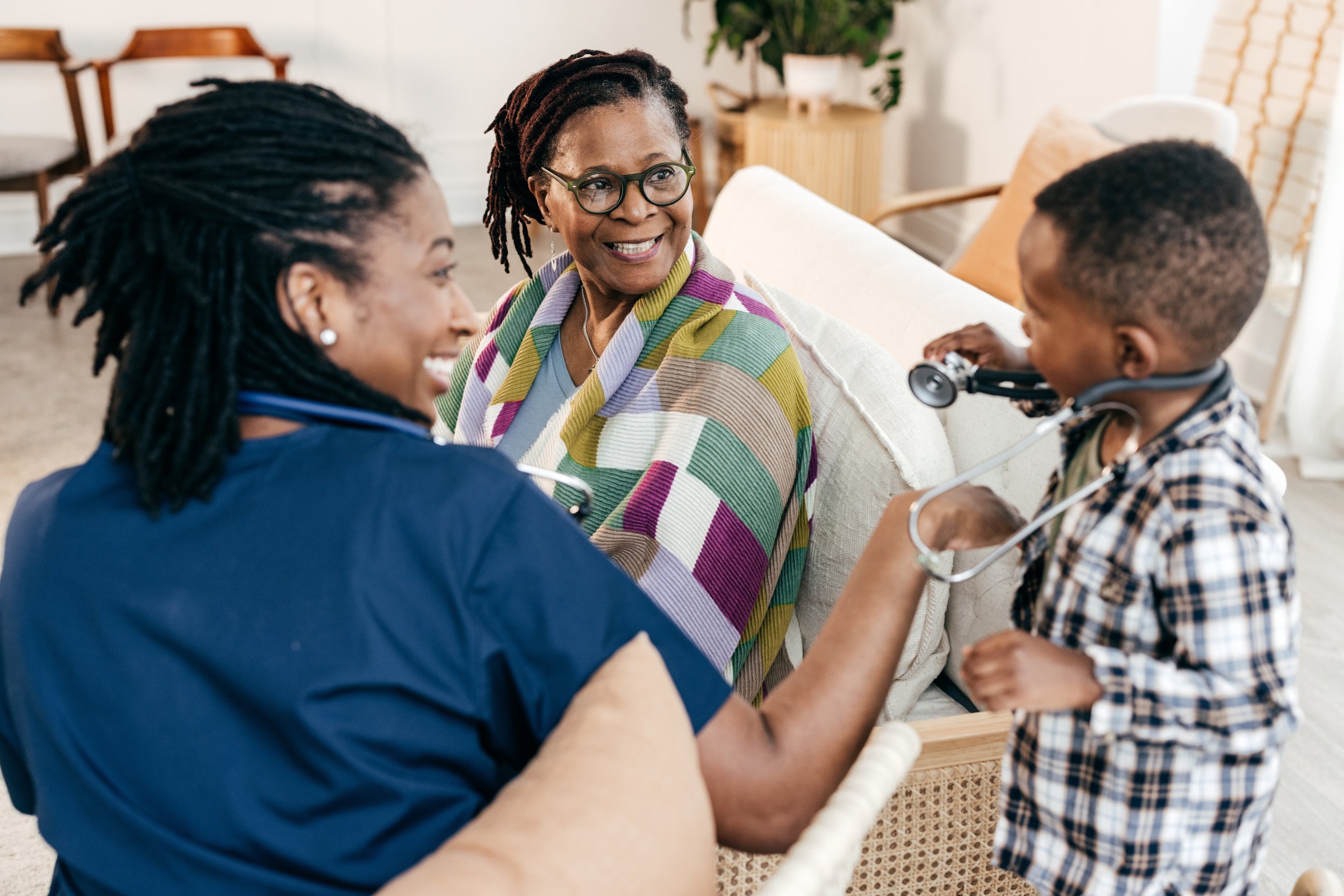
Establishing Trust Before
In-Home Health Evaluations
In this project, our team researched effective strategies for communicating the value of IHEs to members with the goal of increasing in-home evaluations (IHE) by 25%.
Role:
UX Researcher
Service:
Service Design
Duration:
2 Months
Key Results
Proposed 24 opportunities to improve the home health experience.
Highlighted three main values that members cherish in a health provider/service.
Presented the case study to the Vice President of Product Management, which was then reviewed by the CEO.
Recruiting and interviewing members to gain unique perspectives.
In this project, my role consisted of leading the recruitment and interview team. Our goal was to gather insights from potential Signify Health members and subject matter experts on the current state of in-home healthcare. We wanted to understand their perspectives on what aspects of in-home healthcare could be improved and which ones should remain the same.
Questions were compiled with these themes in mind:
The participant's background and demographic.
The approaches and methods used to inform the members of In-Home Evaluations (IHEs).
Challenges or barriers members may face when encountering health care services.
Resources that members have access to or are notified about.
Their opinion on how they believe the service can be improved.
Who did we interview?
Potential Members
Our targeted audience consists of Medicare members and individuals who are 65 years of age or older.
A total of five interviews were conducted with participants ranging in age from 62 to 86 years old.
4 Women: 62-86 y/o
1 Man: 49 y/o
Subject Matter Experts
Our subject matter expert interviews involved 3 health providers with different areas of expertise in home health care:
Occupational Therapist
Definitive Care Coordinator
Vocational Nurse
Focus Group
Fortunately, we connected with a nearby senior center, allowing us to conduct a focus group in an open and collaborative environment. This facilitated the gathering of diverse perspectives from the participants.
In the focus group, six participants ranged in age from 62 to 87.
5 Women: 62-78 y/o
1 Man: 87 y/o
Synthesizing our findings in Dovetail.
After conducting all the interviews, we extracted key takeaways, 24 pain points, and 12 themes that we had noticed.
Using our knowledge of these findings, the interview team collaborated with the 'mapping experiences' team to develop realistic personas and member journeys.
In addition to our interview results, we provided Signify with a new perspective to consider. We wanted to alter their mindset to foster a more personal and intimate connection as if a relative were visiting:
Formal to Casual
Clinical to Personal
Strangers to Family
How do we communicate the value of IHEs?
It was concluded to focus on the three attributes of trust for the member.
Ability
Skills, characteristics, and competencies that enable a person to influence others.Benevolence
Genuine care about others and authentic concern
in relationships.Integrity
The perception that a person adheres to a set of principles that you find acceptable.Reshaping the member’s journey.
After shifting our mindset to focus on personal connections and fostering a familial type of trust, we created personas for the members and stakeholders involved in the In-Home Evaluation process. Next, we began mapping out the current member journey to identify areas for improvement that could enhance their overall experience and strengthen our relationships.
Recommendations to build trust in IHE service.
It was concluded to focus on the three attributes of trust for the member.
Examining Member Attention
Create a more memorable experience for members, gentle reminders can be sent through various channels, such as phone calls, mailers, or emails. This will help members keep track of their appointments without the added stress of having to remember all the small details.
Establishing Health Literacy
Personalize members' in-home evaluation experiences by educating them about their specific health needs. To build a stronger community presence, Signify Health could host pop-up events at local CVS stores. These events could include free educational classes that improve health knowledge, thereby raising Signify Health's profile and establishing the company as a trusted resource.
Managing Technical Ability
Designing for different technology levels can enhance the user experience by making it more accessible and inviting. It can also personalize the in-home health experience by providing users with personalized health profiles and translating their concerns to a healthcare provider through an AI chat assistant.
Potential next steps
Conduct comprehensive research on health laws, corporate relations, communities, and healthcare providers while evaluating our initial concepts.
Thank you for reading!
Check out some of my other case studies
Want to work together? Feel free to contact me. | Email: athaliamgaston@gmail.com



















